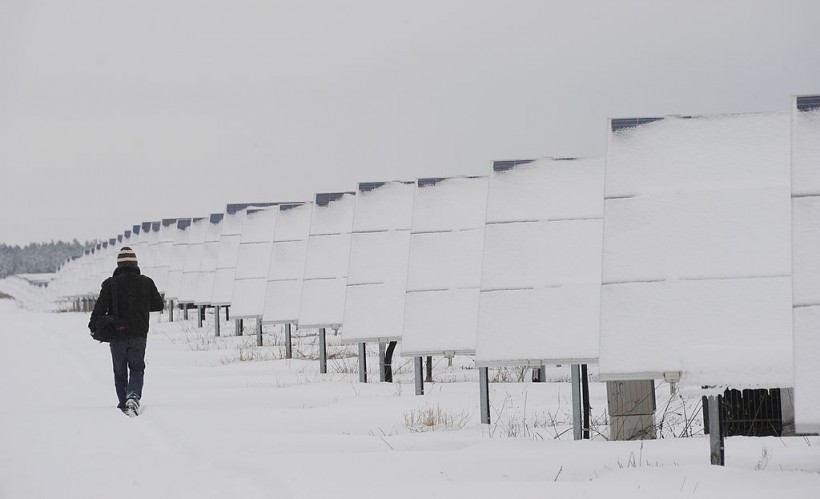Somewhere in Switzerland's longest dam, a large wall brimming with solar panels was built to expand the country's green energy output, especially during winter months.
The massive solar dam was installed near Lake Muttsee, located in the country's central canton of Glarus. The project is called AlpinSolar and was made possible by three Swiss companies.

Snow covers solar panels at a solar park in Meuro, northeastern Germany, on February 21, 2013. In spite of the snow layer, the plant situated on an old lignite mine is producing energy.
Alpine Solar Plants
The Lake Muttsee dam measures around 2,400 meters above sea level and is located around snow-capped peaks. A spokesperson from Swiss energy producer Axpo told Reuters that the project's location is the key benefit for producing maximum clean energy output.
Communications lead for renewables at Axpo Jeanette Schranz claims that the alpine solar plants generate three times more electricity compared to similar facilities in the midlands.
The dam brims with nearly 5,000 solar panels and can produce 3.3 million kilowatt hours of energy per year to power at least 700 houses. This project is already up and running since its deployment was completed last year.
The solar panel installation has a 0.62-mile (one-kilometer) width, and the array can produce 2.2 megawatts of electricity.
Megasol, a Swiss solar manufacturer, provided the bifacial glass-glass solar modules for the project. The panels' 1.5-inch (40 mm) framework allows them to withstand the projected snow load in the Swiss Alps.
The Benefits of Snow
According to Axpo, solar panels function better in snowy regions, particularly in the winter months. This is due to the fact that the Sun is brighter at higher altitudes in Switzerland compared to lower altitudes that cause fog.
Revision Energy also notes that colder temperatures make the photovoltaic technology in solar panels more efficient in generating sunlight to power.
White snow is another benefit for energy production since it reflects the sunlight onto the solar panels. Hence, Axpo hopes to produce three times as much solar energy during the winter, specifically in the months of February and March.
An additional 4,200 solar projects are expected to be installed in the country's low-lying and mountainous areas in the future. According to Reuters, the Swiss government is facilitating the spread of more solar in the country with its amended Energy Act.
The nation's plan to phase out nuclear power is linked to its push for more environment-friendly energy production methods. A referendum in 2017 ratified the June 2011 parliament decision not to replace any existing reactors.
According to Schranz, Switzerland's success in making the switch to green energy depends on having a balanced power mix. She claimed that the Alpine solar plants can significantly contribute to this success.
Related Article: The Department of Energy Funds a Project Aiming to Recycle Discarded Solar Panels-But How Much Will it Cost?










